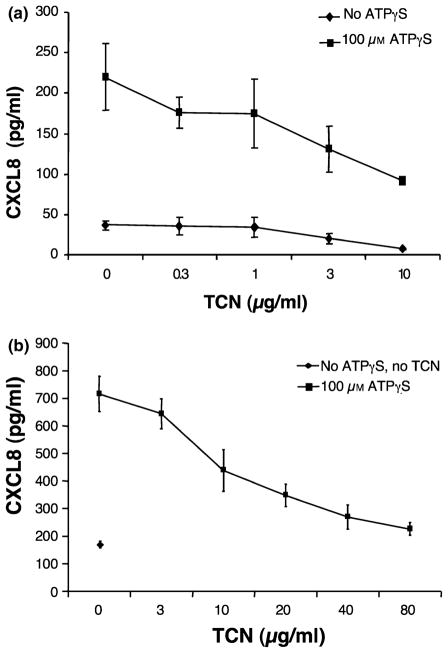Figure 1.
Tetracycline (TCN) dose-dependently inhibits adenosine-5′-triphosphate (ATP)γS-induced CXCL8 production. (a) Human microvascular endothelial cell line-1 (HMEC-1) cells were cultured in the presence of TCN for 30 min followed by addition of ATPγS to 100 μM. Supernatants were collected 24 h later and analysed for CXCL8 content. Note that ATPγS enhances CXCL8 release. Error bars indicate ± SD (P = 0.04 and 0.006, respectively, for TCN of 3 and 10 μg/ml compared with 0 μg/ml for the ATPγS-treated groups). TCN also significantly inhibited non-stimulated production (P < 0.001 and P = 0.125, respectively, for TCN 3 μg/ml and 10 μg/ml compared with 0 μg/ml for the ATPγS groups). (b) Primary human dermal microvascular endothelial cells were cultured in the presence of TCN for 30 min followed by addition of ATPγS to 100 μm. Supernatants were collected 24 h later and analysed for CXCL8 content. Note that ATPγS enhances CXCL8 release. Error bars indicate ± SD (P = 0.008, 0.001, <0.001 and <0.001, respectively, for TCN of 10, 20, 40 and 80 μg/ml) compared with 0 μg/ml for the ATPγS-treated groups).

